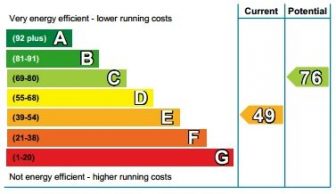 A warning has been issued that Energy Performance Certificates (EPCs) are “misleading” indicators of zero carbon buildings and should no longer be used as official guides to help lower emissions.
A warning has been issued that Energy Performance Certificates (EPCs) are “misleading” indicators of zero carbon buildings and should no longer be used as official guides to help lower emissions.
Analysis by Ingleton Wood, a large property and construction consultancy, shows actual carbon emissions for electrically heated buildings are around 60% lower than predicted by EPCs, mainly because EPC methodology uses carbon factors set by the 2013 Building Regulations rather than up-to-date figures.
According to Ofgem, over 2.1 million homes use electric heating. The change in the carbon factor has been dramatic as renewable technologies continue to make up more of the grid electricity mix while coal generation continues to fall.
An EPC report would today estimate a carbon footprint of 519kg per year for a typical electric heated home needing 1,000 kWh/yr of heating, the Ingleton Wood research found.
But that headline figure is based on the 2013 carbon factor set at 0.519 kgCO2/kWh. This has since fallen to around 0.212, meaning the carbon footprint is far more likely to be around 212kg per year – rather than 519kg – and more in line with gas (203kg).
“Our research strongly suggests EPCs show figures distorted from reality,” Jason Page, a sustainability specialist at the consultancy, said.
“EPCs are a powerful tool in fighting climate change but they are now not only becoming worse at indicating building carbon emissions as the grid’s electricity moves towards renewable generation – they are becoming increasingly and actively misleading.
“In our real-life example of an electric heated home, an EPC would have mistakenly shown gas as having around half the carbon footprint of electricity.
“This seriously risks confusing homeowners and landlords, leading policymakers to incorrect conclusions, and discouraging the decarbonisation of heat away from fossil fuel systems because they appear to reach higher EPC ratings far more easily than electric heating.”
EPCs were introduced in 2007 to record a home’s energy efficiency rating from A to G, with E the lowest legal standard for tenants. EPC assessors recommend changes to lower the carbon footprint and energy bills. EPCs are also used to identify households in fuel poverty, with around 16 million homes in England (two thirds) currently rated D or worse.
As Britain steps up action on climate change, the government is placing greater emphasis on EPCs to help homeowners and landlords make improvements to cut energy use and their carbon footprint in support of UK net zero targets.
In September 2020, a government consultation found only 3% of industry respondents rated EPC reliability as “good”, with criticisms over energy usage and performance assessments.
Page continued:
“While the next update to the Building Regulations, due imminently, may mean new EPCs are produced with carbon factors closer to reality, the decarbonisation of the electricity grid will mean EPC metrics will remain static and very soon be out of sync once more.
“EPCs were developed and continue to provide a static consistent comparison between properties, but as we seek to improve building performance in relation to achieving actual zero carbon ratings, we need to find a way to provide real-time data to continue to tackle the climate crisis.
“EPCs are not the correct tool for this job and I think a huge question mark hangs over whether we can trust EPC recommended improvements for cutting carbon emissions.”


It is a shame EPC’s cannot be in real time. Any change to the methodology, which itself could be in real time, would then be applied, you guessed it, in real time. Even better to be able for the EPC to be updated with any changes to the property, in real time of course, such as new windows, insulation or new boiler, sorry new heat pump.
You must be logged in to like or dislike this comments.
Click to login
Don't have an account? Click here to register